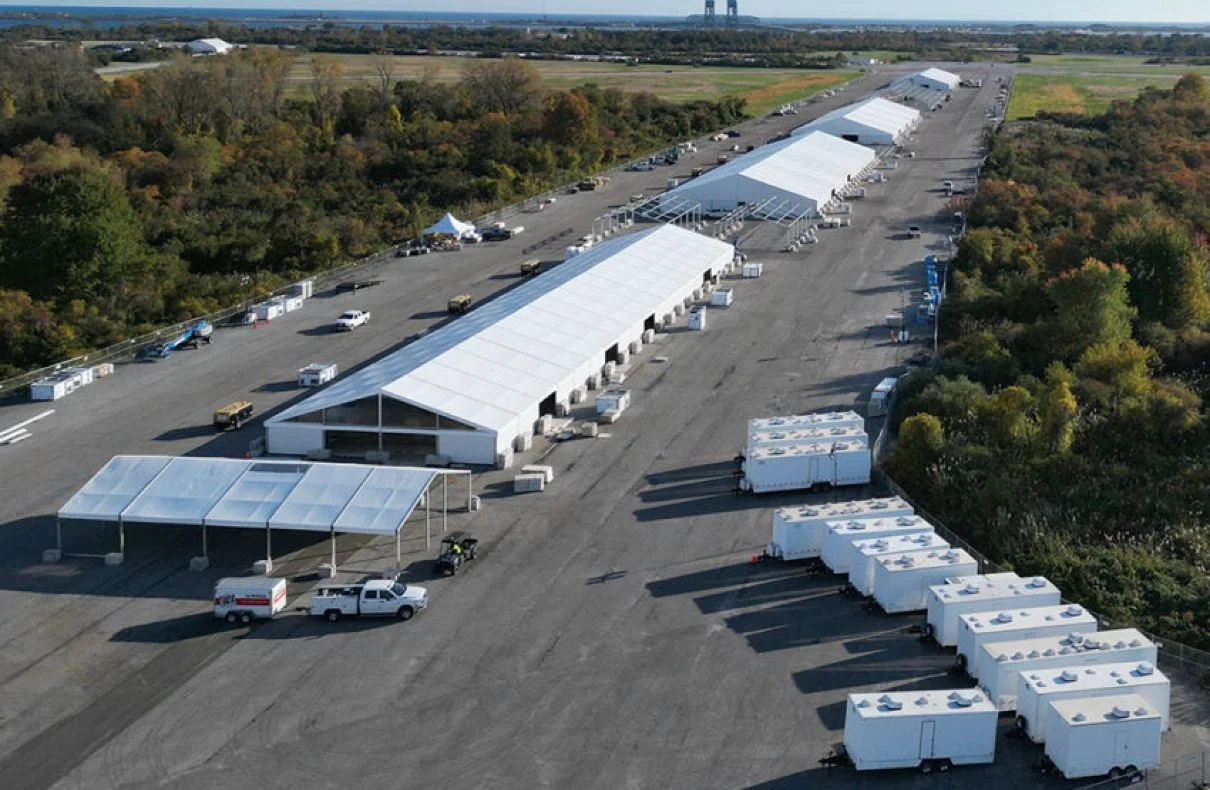
The city of New York faced a challenging situation as a major coastal storm threatened the safety of nearly 2,000 migrants residing at the Floyd Bennett Field shelter. Concerns over heavy rain, gusting winds of over 70 mph, and potential flooding led city officials to undertake a proactive measure to evacuate the shelter for the well-being of the individuals living there.
Amidst the imminent threat posed by the severe storm, city officials made the decision to evacuate the mega-migrant shelter at Floyd Bennett Field. The shelter, which housed approximately 1,900 migrants, was deemed vulnerable to the forecasted heavy rains, strong winds, and potential flooding. The evacuation was a proactive measure taken out of an abundance of caution to safeguard the safety and well-being of the individuals residing at the shelter.
Justice Served: Man Sentenced to 25 Years for Kaylin Gillis Murder
The evacuation process began on Tuesday afternoon, with the occupants being transported to the auditorium of Brooklyn’s James Madison High School. The relocation was carried out systematically, ensuring an orderly and efficient evacuation. The migrants were notified of the plans well in advance, starting at noon, to allow them sufficient time to prepare for the move.
The decision to evacuate the Floyd Bennett Field shelter was driven by valid safety concerns. The shelter, consisting of large-scale tents, had previously faced challenges during extreme weather conditions. In December, migrants staying at the shelter described a terrifying night when a powerful storm caused the tents to shake loudly, rain to seep through the ceilings, and disrupted their sleep. Consequently, emergency management officials decided to fortify the tents with additional ballast to enhance their resilience.
However, with the forecast predicting wind speeds exceeding 70 mph, city officials deemed it necessary to relocate the migrants to a more secure location. The safety and well-being of the individuals working and living at the shelter were prioritized, prompting the proactive evacuation.
The migrants from Floyd Bennett Field were temporarily relocated to the auditorium of James Madison High School. While the city did not officially confirm the temporary housing location, Council Member Inna Vernikov issued a statement confirming the migrants’ relocation to the nearby school. The decision to repurpose the high school drew mixed reactions from the local community.
Some residents expressed frustration and concern over the last-minute decision, highlighting the disruption it caused to their children’s education. There were concerns about the lack of prior notice, leaving parents scrambling to adjust their schedules. However, others recognized the necessity of the relocation and appreciated the efforts of the government and the mayor in providing shelter and support to the migrants.
The evacuation of the Floyd Bennett Field shelter brought existing controversies and criticisms to the forefront. The shelter’s remote location, potential dangers for children, and fire safety concerns had already sparked debates and criticism from various stakeholders.
City Comptroller Brad Lander criticized the administration for not adequately preparing the shelter for extreme weather conditions. He called for increased flood protection measures and a clear long-term plan for Floyd Bennett Field as an emergency shelter. Additionally, Councilwoman Joann Ariola expressed concerns about the unsuitability of the tent complex, urging alternative locations such as the Park Slope Armory.
Mistrial Declared in Former Ohio Deputy’s Murder Trial: What Happens Next?
City officials reiterated their commitment to the safety and well-being of the migrants and outlined their plans for the future. The temporary relocation would continue until the weather conditions stabilized and the Floyd Bennett Field shelter was deemed fit for habitation again. The city emphasized its proactive approach and the comprehensive measures taken to ensure the safety of the migrants.
The evacuation highlighted the need for continuous improvement in emergency shelter management and planning. As extreme weather events become more frequent, the city must address the vulnerabilities of existing shelters and develop robust strategies to mitigate risks. It is crucial to provide suitable and safe shelter options for migrants while also considering the concerns and needs of the surrounding communities.
